In the rich tapestry of Bharat’s history, idol worship has often been a point of contention, shaped by cultural, historical, and religious narratives. This blog delves deep into the origins and significance of idol worship, exploring its philosophical underpinnings and the impact of external ideologies on Bharat’s sacred art and architecture.
Table of Contents
- Introduction to Idol Worship in Bharat
- The Broader Context of Idol Worship
- Understanding Brahman: The Primordial Cause
- Conclusion: The Pluralistic Heritage of Bharat
- FAQ: Common Questions About Idol Worship
Introduction to Idol Worship in Bharat
Idol worship in Bharat is not merely a practice; it embodies a profound connection between the worshipper and the divine. This tradition reflects the rich cultural heritage and spiritual depth of Bharat, where deities are not just representations but are seen as manifestations of the ultimate reality. Understanding idol worship requires delving into its historical context, philosophical significance, and the reasons it has been a subject of contention.
Understanding the Vandalism of Idols
Throughout history, many ancient temples in Bharat have faced vandalism, particularly during periods of invasion and ideological imposition. This destruction is not just an attack on religious icons; it signifies a broader assault on cultural identity and heritage. The impact of such actions resonates deeply within communities, leading to a loss of historical and spiritual connection.
The Structure of the Documentary
This exploration of idol worship is structured into three comprehensive chapters. Each chapter aims to unravel the complexities surrounding idol worship, the philosophical inquiries it provokes, and the historical narratives that shape its perception. This segmented approach facilitates a clearer understanding of the topic, allowing for a nuanced discussion of its implications in contemporary society.
Chapter 1: The History of Contentions on Idol Worship
The first chapter examines the historical underpinnings of idol worship controversies. It seeks to answer the question of why idol worship has been contentious throughout history and explores the roots of these disputes.
Origins of Idol Worship Controversies
The origins of the contention surrounding idol worship can be traced back over three thousand years. The Israelites, under Moses, embarked on a journey that would shape the foundations of Judaism, Christianity, and Islam. During this journey, the creation of the golden calf marked a pivotal moment. This incident not only established a prohibition against idol worship within these religions but also set a precedent for ideological conflicts that would arise in various cultures, including Bharat.
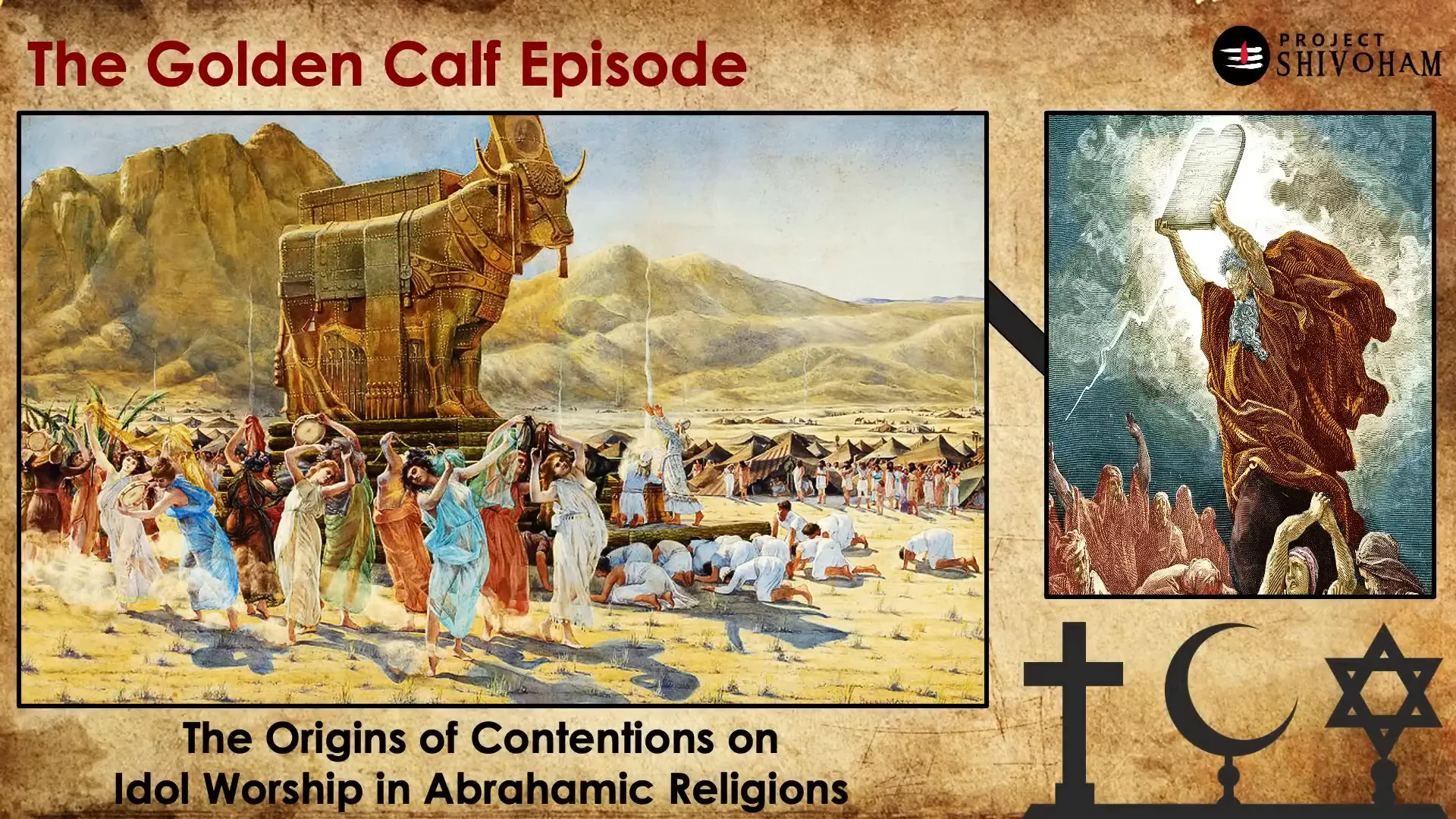
The Israelites and Their Journey
The journey of the Israelites from Egypt to their promised land is a significant narrative. Led by Moses, they sought to establish a community grounded in the worship of Yehovah, rejecting the idol practices that they had known. This rejection of idol worship would later influence the Abrahamic faiths, leading to a widespread condemnation of such practices across different cultures.
Idol Worship Forbidden: The Golden Calf Incident
The golden calf incident serves as a critical turning point in the history of idol worship. The Israelites’ choice to create an idol during their exodus symbolizes a profound struggle between faith and physical representation. Moses’ response—punishing the idolaters—reinforces the prohibition against idol worship, which would echo through the ages in the teachings of Judaism, Christianity, and Islam.

The Impact of Abrahamic Religions on Idol Worship
The imposition of Abrahamic ideologies on cultures with rich traditions of idol worship led to significant cultural and artistic losses. In Bharat, this resulted in the vandalism of countless temples and idols, reflecting a broader narrative of ideological conflict. The rejection of idol worship by these religions not only marginalized local practices but also led to a cultural erasure that is still felt today.
Consequences of Ideological Imposition
The consequences of imposing a singular ideological perspective on a diverse cultural landscape have been profound. Local religions and practices faced persecution, leading to the destruction of sacred sites and a loss of identity. The vandalism of idols is not merely an act of aggression but a reflection of the deeper ideological battles that continue to shape societal attitudes toward worship and spirituality.
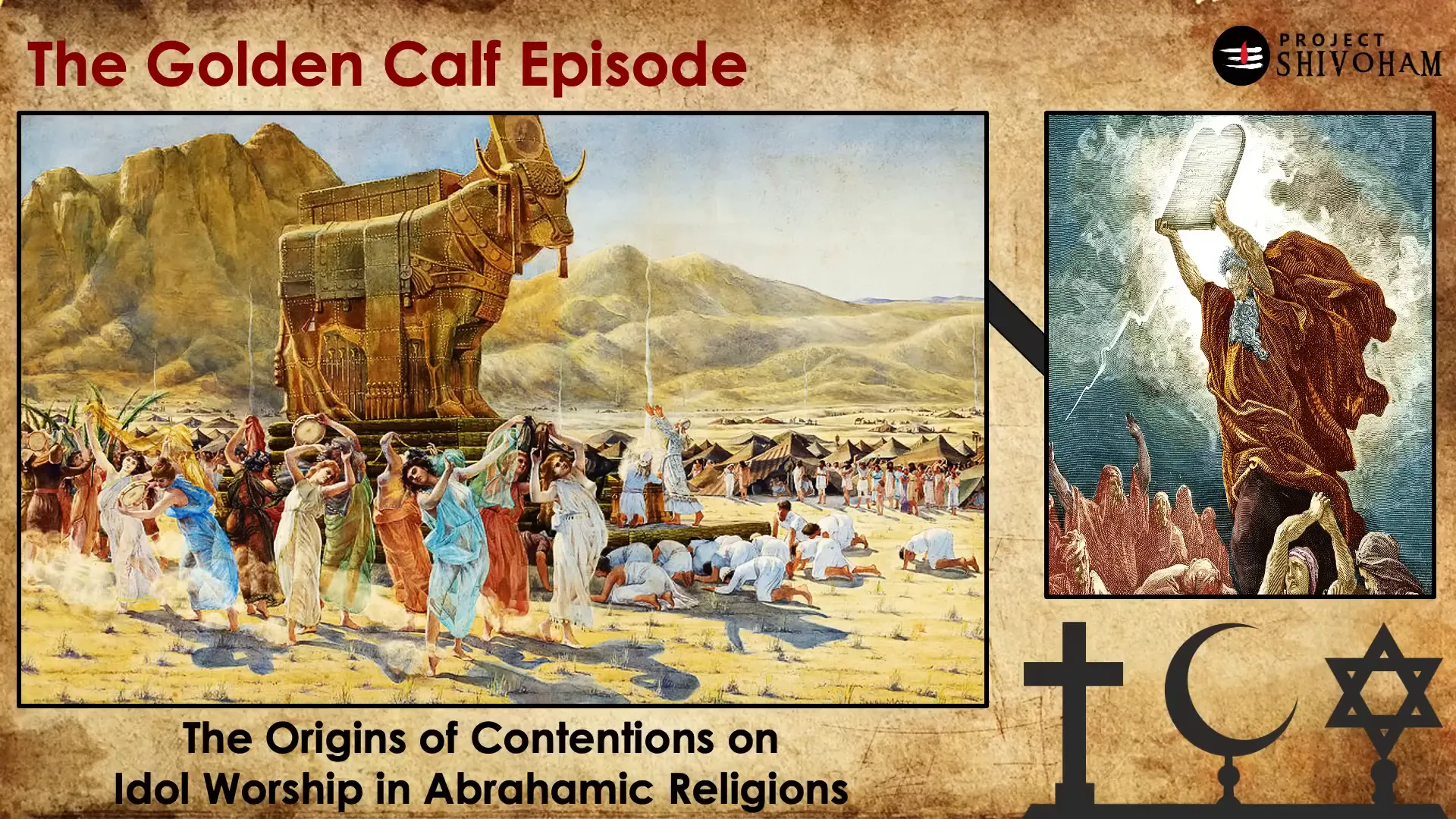
The Broader Context of Idol Worship
Idol worship, while often viewed through the lens of cultural practices, extends far beyond mere aesthetic representation. It serves as a conduit for individuals to connect with the divine, embodying layers of historical, spiritual, and philosophical significance. In Bharat, this practice is intertwined with the very fabric of society, reflecting both reverence and the complexities of human belief systems.
Chapter 2: Discovering the Universal Truth
To truly grasp the essence of idol worship, we must first address a fundamental question: why do people worship at all? This inquiry transcends geographical and cultural boundaries, prompting us to explore the shared motivations behind worship across various societies. The quest for understanding leads us to a universal truth.
The Fundamental Question: Why Do People Worship?
Across the ages, worship has manifested in myriad forms, from the veneration of deities to the reverence of nature. This phenomenon is not confined to any single culture; rather, it is a global human experience. The motivations for worship can be distilled into five key stages, which highlight the evolution of human thought and emotion.
- Ignorance: The initial state of mind where one simply exists without understanding the forces at play in their environment.
- Experience: As individuals encounter the world, they begin to recognize the impact of natural phenomena, such as the sun, on their lives.
- Gratitude: With awareness comes appreciation. Acknowledging the sun’s role in sustaining life fosters a sense of thankfulness.
- Respect: This gratitude deepens into respect, recognizing the sun as a vital force that supports existence.
- Devotion: The culmination of this journey manifests as devotion, where individuals express reverence through worship.
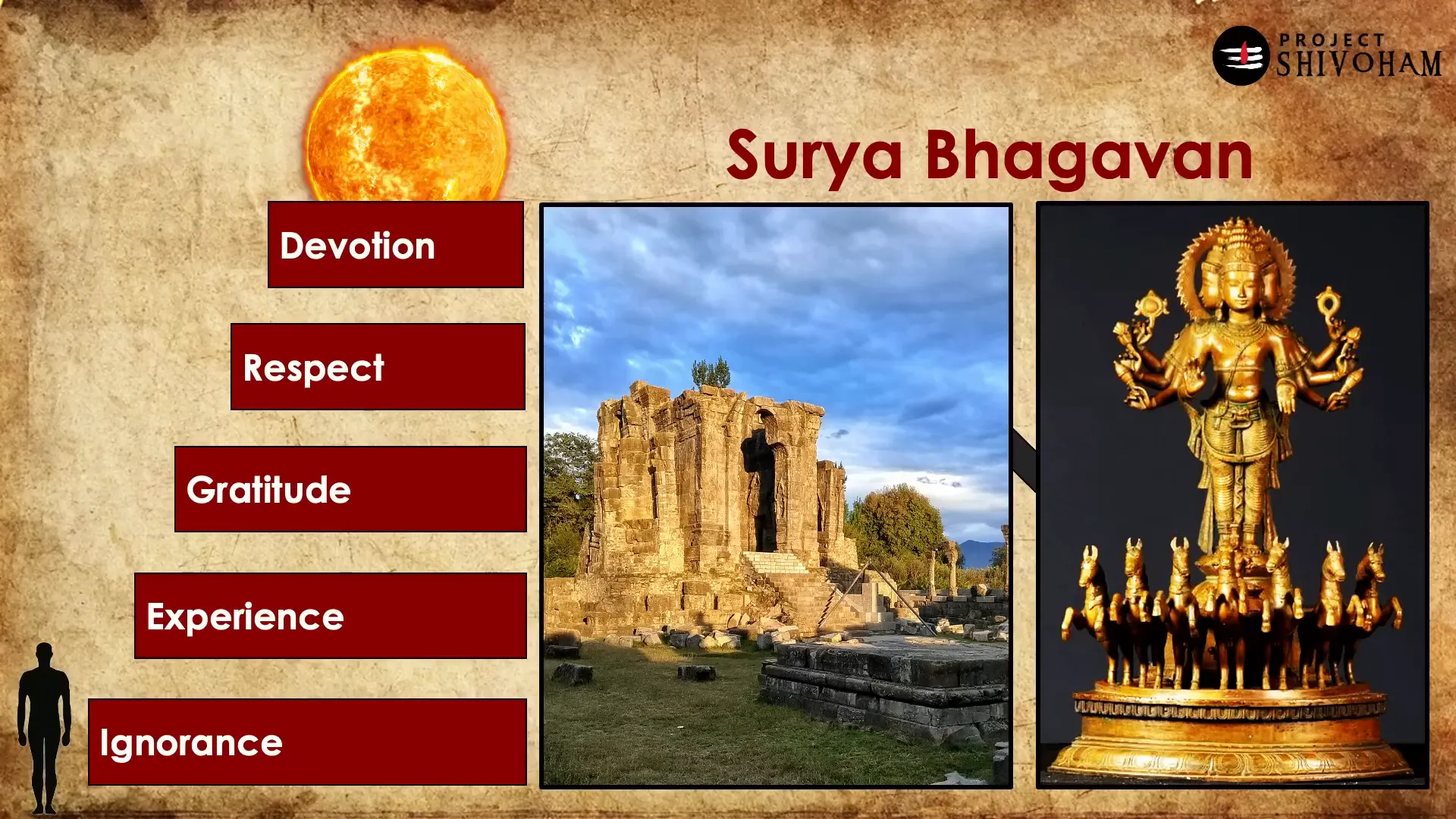
Historical Patterns of Worship Across Cultures
Throughout history, worship has taken diverse forms, often tailored to the specific needs and environments of different cultures. From the sun worshipped by ancient civilizations to the sacred trees revered in tribal societies, these patterns reflect humanity’s innate desire to connect with something greater than themselves. This connection often hinges on survival; the sun, for instance, is not just a celestial body but a life-giving force that influenced agricultural cycles and, ultimately, societal development.
The Five-Step Evolution of Worship
As we delve deeper into the motivations behind worship, we recognize a consistent five-step evolution that spans across cultures. This pattern reveals how individuals transition from ignorance to devotion through a process of experiential learning and emotional growth.
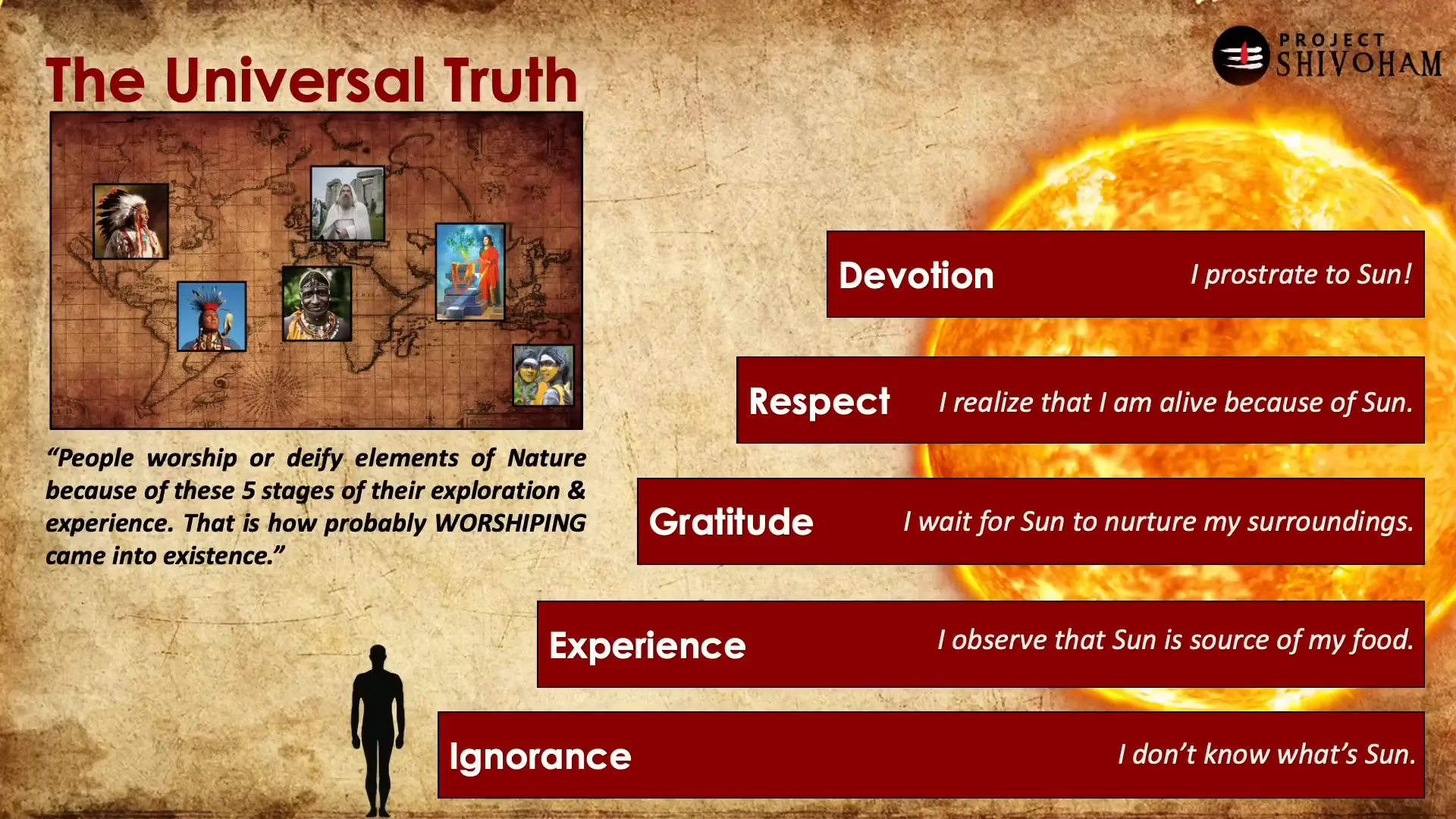
Examples of Worship in Different Cultures
Examining various cultures highlights how worship practices adapt to local beliefs and environmental circumstances. For example, tribal communities may worship rivers, mountains, or animals, each entity serving as a symbol of sustenance and connection to the earth. The common thread is that worship often arises from a deep recognition of the interdependence between humans and their environment.
The Bharatiya Context of Worshiping Surya Bhagawan
In Bharat, the worship of Surya Bhagawan, the sun deity, exemplifies the intricate relationship between spirituality and daily life. Surya Bhagawan is not only revered for his life-giving properties but also plays a crucial role in the cultural and scientific advancements of Bharat. Temples dedicated to Surya Bhagawan, such as the Martansan Temple of Kashmir, are not merely architectural marvels; they encapsulate centuries of devotion and understanding of the cosmos.
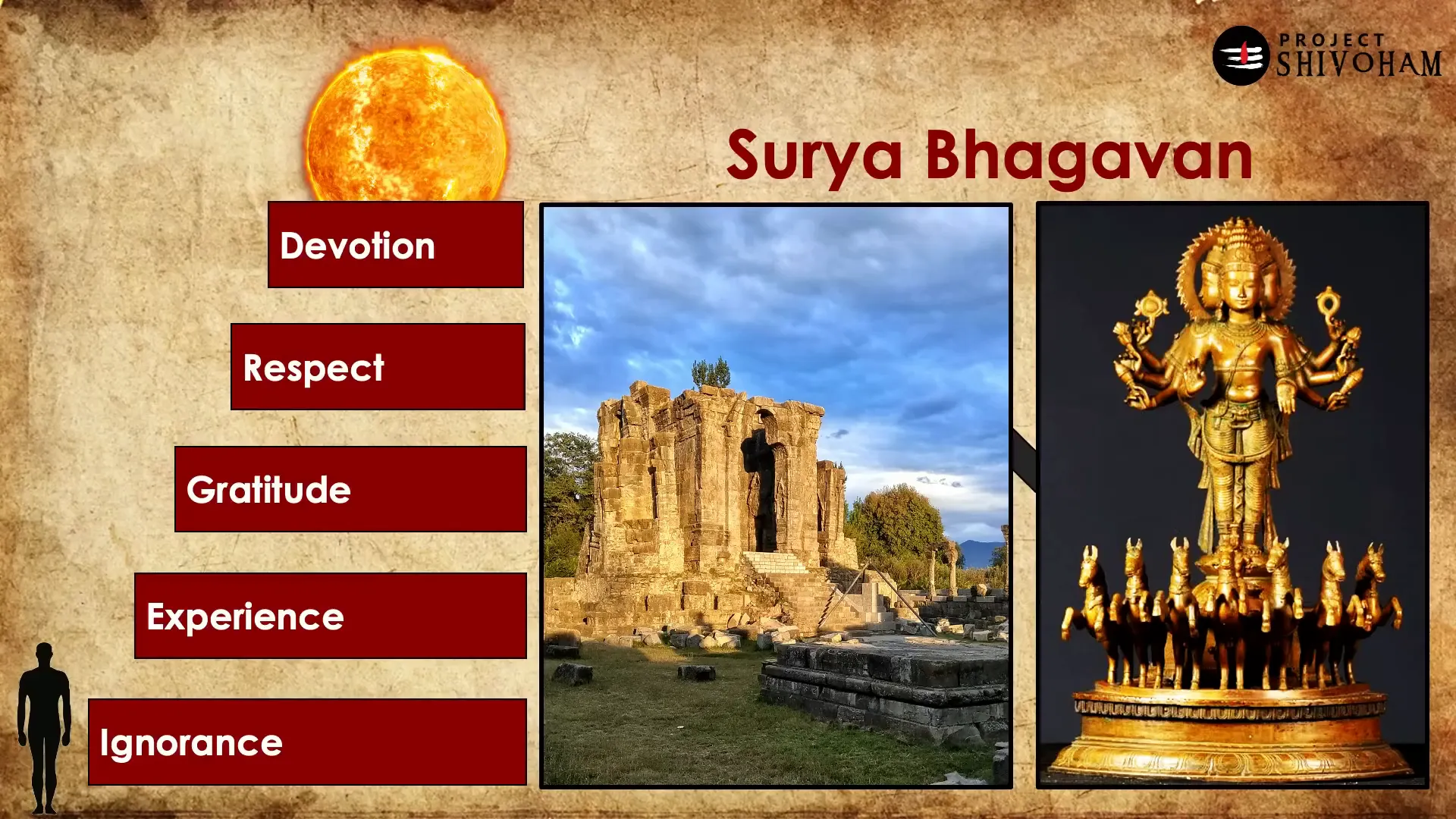
The Universal Truth: Devotion vs. Superstition
While devotion is often grounded in gratitude and respect, it is essential to recognize that worship can also stem from superstition. The distinction between these two motivations lies in the emotional response elicited by one’s experiences. When fear or insecurity drives worship, it veers into the realm of superstition, whereas genuine devotion arises from a place of understanding and appreciation.
Chapter 3: The Bharatiya Philosophy on Idol Worship
The philosophy surrounding idol worship in Bharat is deeply rooted in the quest for understanding Brahman, the ultimate reality. In this context, idol worship serves as a tangible representation of the divine, allowing individuals to engage with the abstract concept of Brahman in a more accessible form.
The Essence of Brahman
Brahman, revered as the primordial cause of existence, transcends human comprehension. The teachings of scriptures like the Kenopanishad emphasize the importance of seeking the underlying truths of existence, illustrating the complexity of the universe as a web of cause and effect. Understanding Brahman requires a journey of introspection and inquiry, often facilitated through the practice of idol worship.

Idol Worship: A Pathway to Understanding
In Bharatiya philosophy, idol worship is not an end in itself but a means to realize the greater truth of Brahman. The physical forms of deities serve as focal points for devotion, guiding worshippers towards a deeper understanding of the divine essence. This dual approach—Sakara (with form) and Nirakara (without form)—highlights the multifaceted nature of worship in Bharat.
As we navigate the complexities of idol worship, it becomes crucial to discern the motivations behind different practices and to foster a respectful dialogue that honors the rich tapestry of beliefs that exist within and beyond Bharat. Understanding the philosophical underpinnings of idol worship can pave the way for greater appreciation and respect for diverse spiritual traditions.
Understanding Brahman: The Primordial Cause
Brahman represents the ultimate reality, the primordial cause that transcends human experience and comprehension. This concept is not just a philosophical abstraction; it is the foundation upon which the entire universe operates. In the quest for understanding, we must recognize that Brahman is not merely a distant entity but the essence of existence itself.
The teachings of various scriptures, including the Vedas, guide us in uncovering the layers of meaning behind Brahman. The exploration of Brahman invites us to engage in deep introspection, pushing the boundaries of our understanding. Worship, in this context, becomes a means to connect with this profound reality.

Kenopanishad: A Dialogue on Existence
The Kenopanishad serves as a critical text in understanding Brahman. It presents a dialogue between a guru and a disciple, addressing fundamental questions about existence and consciousness. The disciple’s inquiry into the nature of the mind, life, and intelligence leads to the revelation of Brahman as the invisible force behind all phenomena.
The guru articulates that Brahman cannot be perceived by the senses, nor can it be fully comprehended by the mind. This notion challenges our conventional understanding of reality and invites us to explore the depths of existence beyond the physical realm. The dialogue emphasizes that true knowledge of Brahman is not merely intellectual but experiential.

The Complexity of Brahman and Worship
Brahman embodies both the known and the unknown, the manifest and the unmanifest. This duality is crucial in understanding the practice of idol worship. In Bharatiya philosophy, worshiping through idols (Sakara) serves as a tangible approach to engage with the abstract concept of Brahman (Nirakara). This relationship between the two forms of worship enriches the spiritual experience.
Idol worship is often misunderstood as mere superstition, but it is a profound expression of devotion. The physical forms of deities act as focal points, allowing worshippers to channel their emotions and intentions towards the divine. This connection fosters a deeper understanding of Brahman, transforming the act of worship into a pathway toward enlightenment.
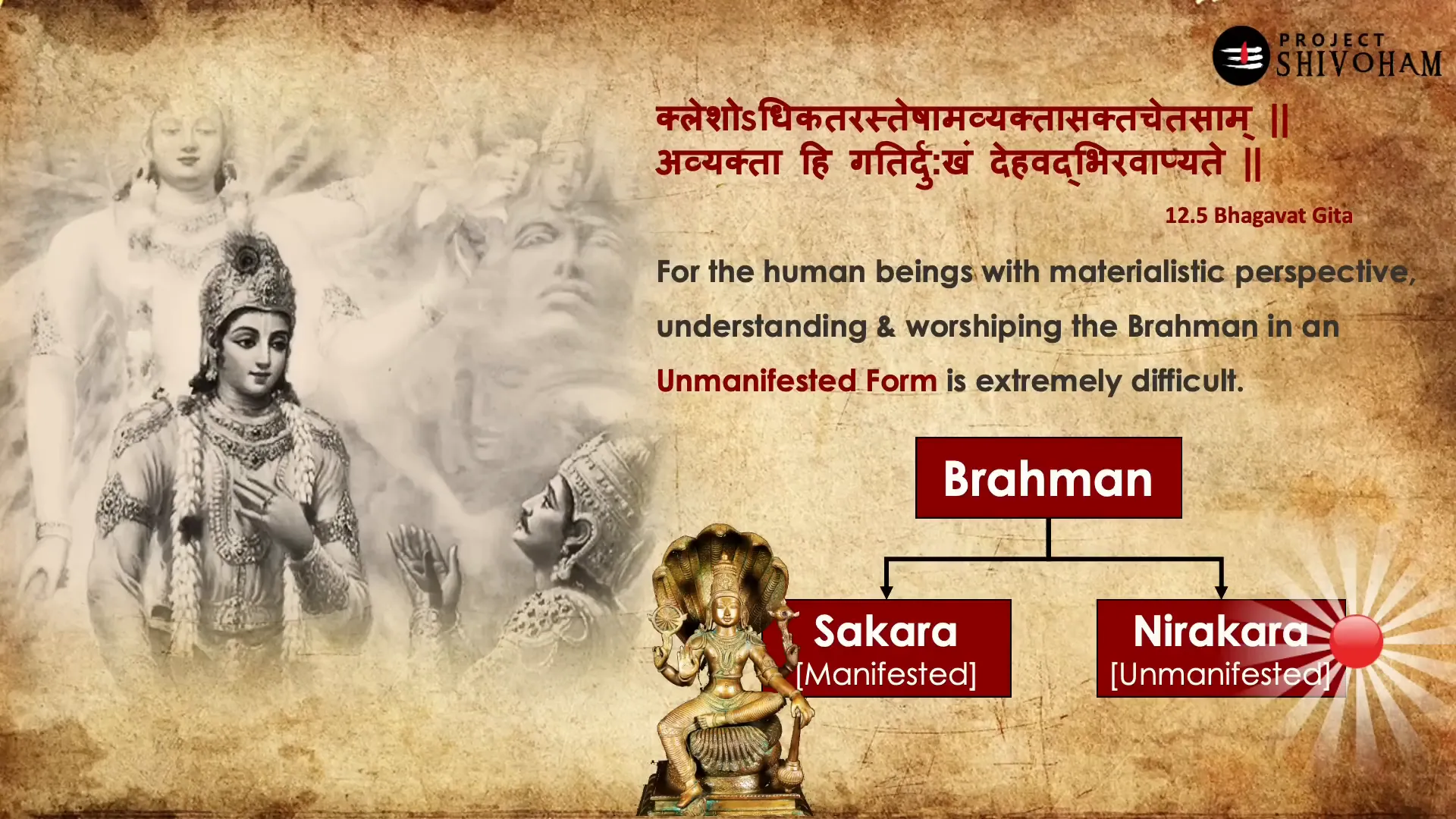
Addressing Misconceptions About Idol Worship
Misconceptions surrounding idol worship often stem from a lack of understanding of its philosophical roots. Critics argue that idol worship detracts from the essence of spirituality, yet they overlook the rich historical and cultural significance embedded in this practice. Idol worship is a method of reverence, not a replacement for the divine.
In Bharat, idol worship is deeply ingrained in the cultural fabric, serving as a bridge between the material and spiritual worlds. It provides a means for individuals to express their devotion and connect with the divine in a personal and relatable manner. By recognizing the importance of idol worship, we can foster a more inclusive dialogue that respects diverse spiritual expressions.
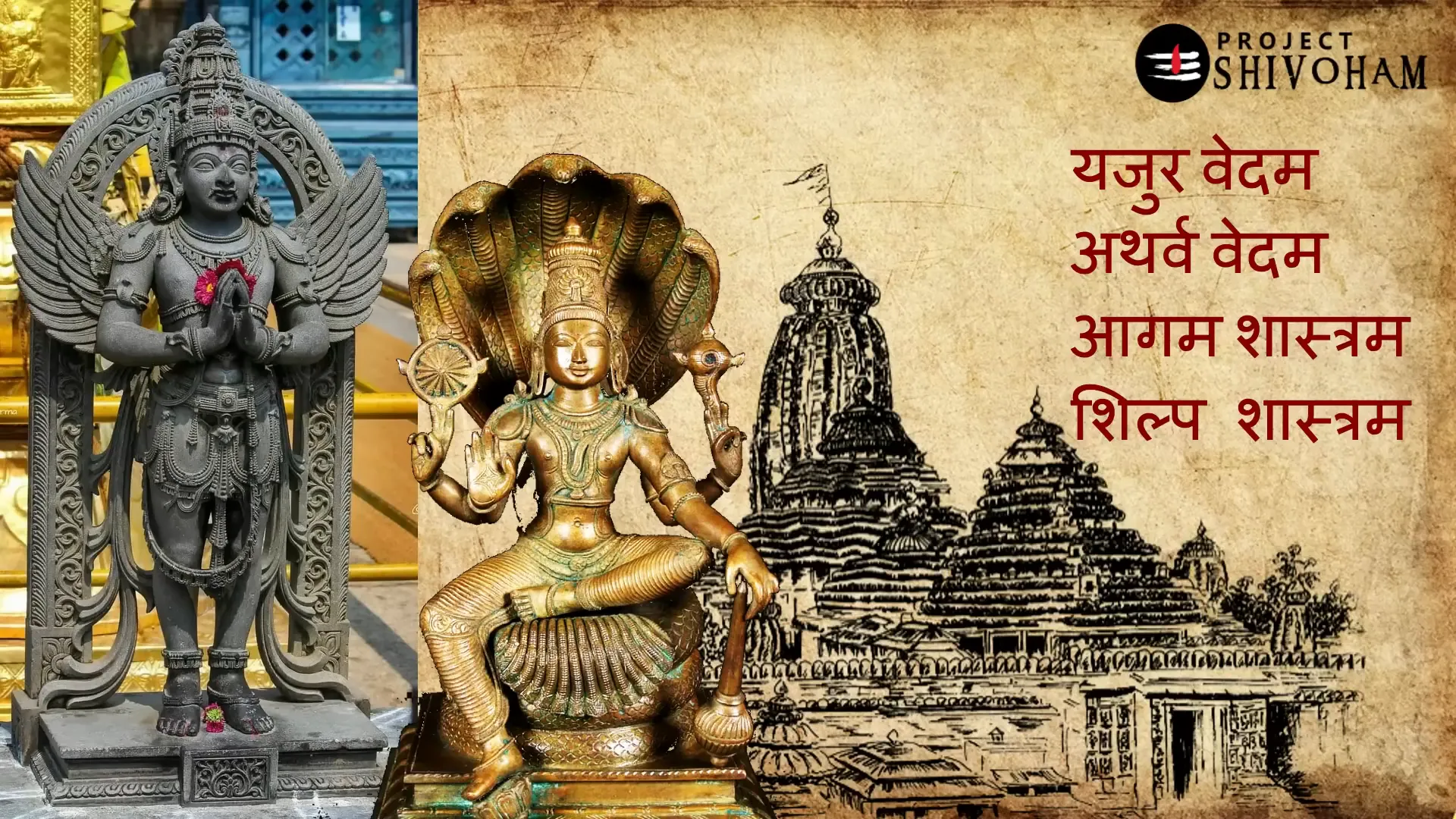
The Historical Example of Gudimallam Shiva Lingam
The Gudimallam Shiva Lingam in Tirupati, Andhra Pradesh, serves as a poignant example of the historical significance of idol worship in Bharat. This ancient artifact, dating over two thousand three hundred years, showcases the intricate relationship between art, spirituality, and cultural identity. The Shiva Lingam embodies the features described in the Yajurveda, reinforcing the connection between scripture and practice.
This temple, under the Archaeological Survey of India, stands as a testament to the enduring legacy of idol worship in Bharat. The unique characteristics of the Gudimallam Shiva Lingam challenge conventional interpretations of Brahman and underscore the complexity of spiritual symbolism. It invites us to reconsider preconceived notions about idol worship and its place within the broader context of spirituality.
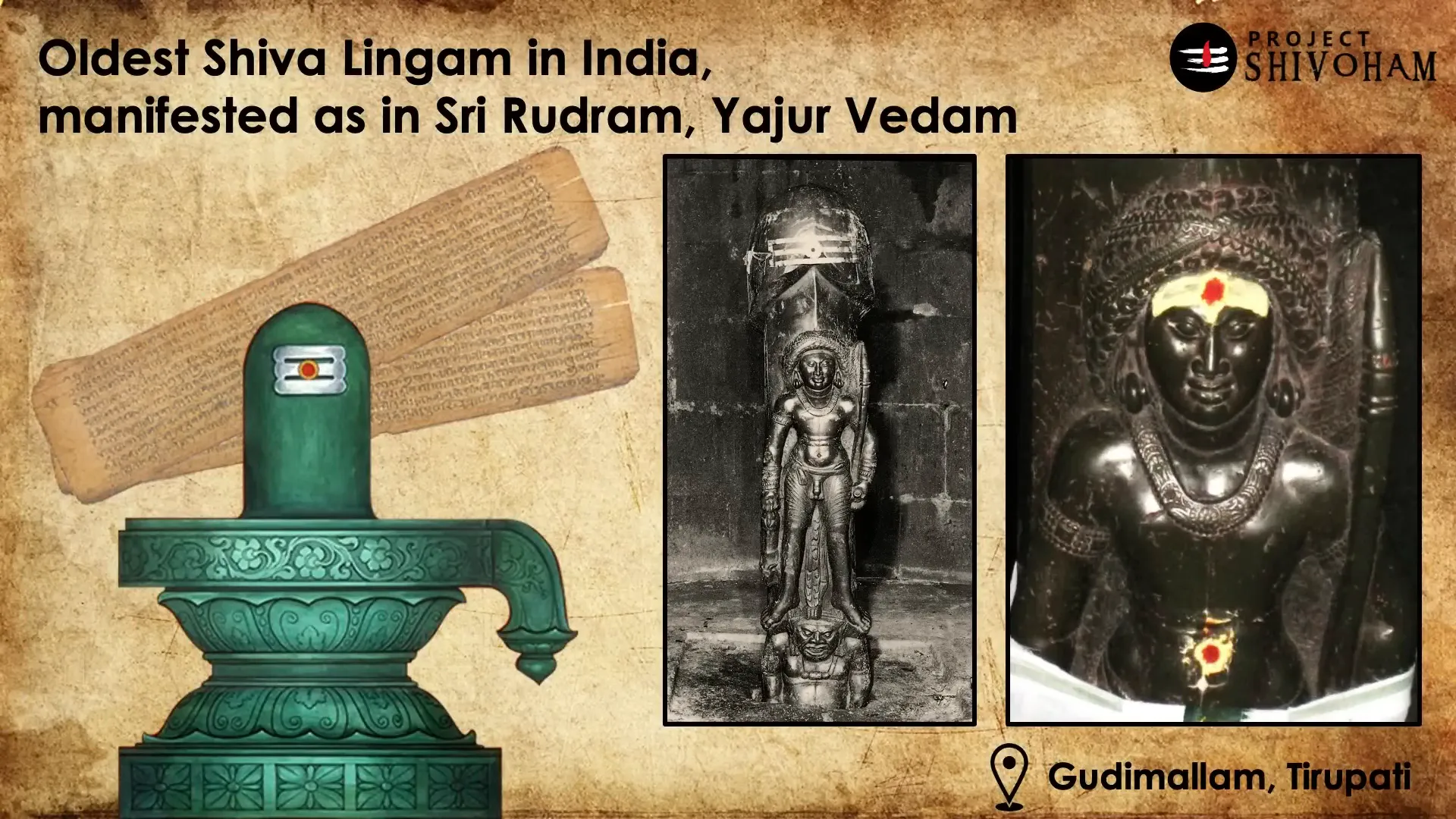
Conclusion: The Pluralistic Heritage of Bharat
The exploration of idol worship in Bharat reveals a rich and complex tapestry of beliefs, practices, and philosophies. It is a testament to the pluralistic nature of Bharat’s spiritual heritage, where diverse expressions of devotion coexist and thrive. By engaging in respectful discourse, we can honor the myriad ways in which individuals connect with the divine.
As we reflect on the historical and philosophical underpinnings of idol worship, we must recognize its significance within the larger narrative of human experience. The practice serves not only as a means of worship but also as a bridge connecting us to the profound questions of existence, identity, and the nature of the divine.
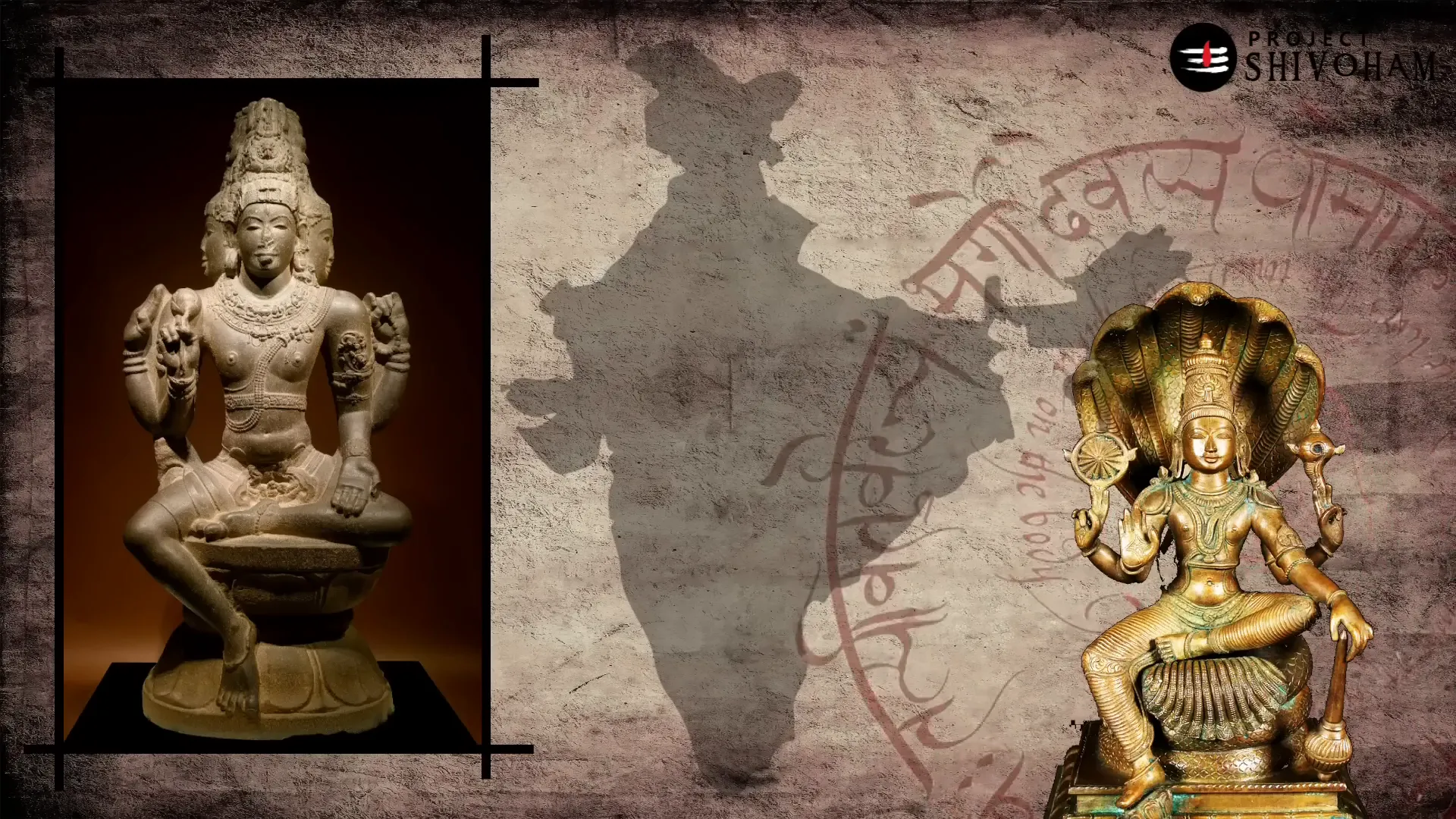
FAQ: Common Questions About Idol Worship
1. Is idol worship considered a form of superstition?
No, idol worship is not merely superstition; it is a deeply rooted practice that embodies devotion and serves as a pathway to understanding the divine. It allows individuals to connect with Brahman in a tangible way.
2. Why do some religions oppose idol worship?
Opposition to idol worship often stems from historical contexts and ideological beliefs that prioritize an abstract understanding of the divine. This perspective may overlook the cultural significance and spiritual depth of idol worship in various traditions.
3. How does idol worship relate to the concept of Brahman?
Idol worship (Sakara) serves as a means to engage with the abstract concept of Brahman (Nirakara). It provides a physical representation that allows worshippers to express their devotion and seek a deeper understanding of the ultimate reality.
4. Can idol worship coexist with other forms of worship?
Yes, idol worship can coexist with other forms of worship. Bharat’s pluralistic heritage embraces diverse spiritual expressions, fostering an environment where various beliefs and practices can thrive together.
5. What is the significance of historical idols like the Gudimallam Shiva Lingam?
Historical idols like the Gudimallam Shiva Lingam exemplify the intricate relationship between art, spirituality, and cultural identity. They challenge conventional interpretations and underscore the complexity of spiritual symbolism in Bharat.
This article was created from the video The Untold Story of Idol Worship in Bharat || Project SHIVOHAM with the help of AI. Thanks to Aravind Markandeya, Project Shivoham.